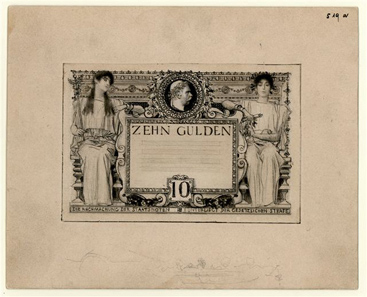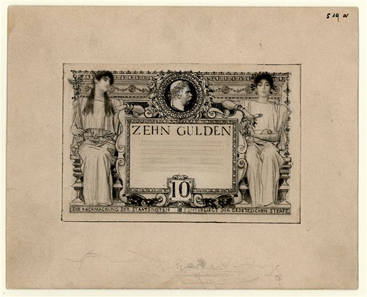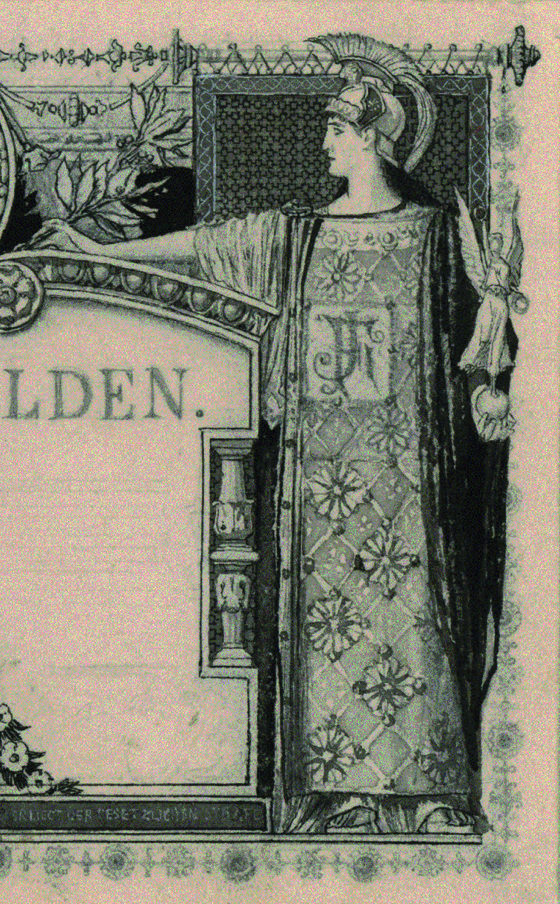July 15, 2010 – Gustav Klimt (1862–1918) is considered one of the foremost artists of the Jugendstil movement. His works are highly coveted by collectors all over the world. Little is known, however, about his artistic beginnings and his financial situation.
Abb. 1: Draft of 10 gulden 1892 by Gustav Klimt and Franz Matsch.
Klimt was born in an era dominated by historicism, which was eventually replaced by modernism: Toward the turn of the century, Vienna experienced the emergence of new forms of artistic expression and a change of generations in architecture, painting, music and literature. Together with his brother Ernst and his fellow student Franz Matsch, Gustav Klimt rose to artistic prominence in the last decades of the 19th century.
Abb. 2: Detail from one of the drafts.
His father’s and Ernst’s deaths in 1892 provoked a creative crisis and a change in the painter’s artistic vision and style. Works from this fateful year are scarce; therefore, Klimt’s drafts for banknote designs, which have never been on exhibition before, are pieces of special artistic and cultural-historical importance.
The exhibition features numerous works that illustrate Klimt’s rise from poverty to one of Europe’s most successful and highest paid portraitists. Next to the banknote drafts by Gustav Klimt and Franz Matsch, it includes rare treasures like Klimt’s handwritten curriculum vitae and two of his wallets.
More information at http://www.oenb.at/de/ueber_die_oenb/geldmuseum/geldmuseum.jsp






